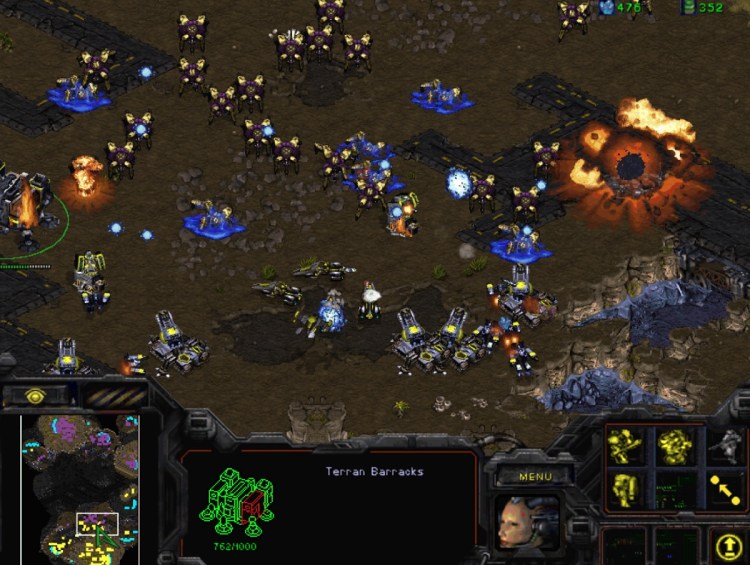In South Korea, gaming is big business. Nearly everywhere you turn, you see an ad for a game—from subway stations to billboards to television. According to a recent report, the country’s online gaming sector has grown by almost 15 percent, reaching 83 billion won, or $76.2 million, as of 2016. Traditionally, games developed in Korea had a local focus, but as of late, the market is developing more games with global appeal. South Korea now accounts for 14.9 percent of the global gaming market.
It is no secret that console and mobile gaming’s popularity has challenged the PC gaming industry’s dominance. In 2016, mobile games revenue exceeded PC and console revenue for the first time ever. Users now have access to games wherever they are. But as alluring as that on-demand play might be, there is still a major drawback to mobile for the serious gamer: its small screen size. That is part of the reason why we are seeing a resurgence in PC-gaming, both in Korea and beyond.
G-STAR 2017 illustrates PC gaming renaissance
In late 2017, gaming industry professionals flocked to Busan, South Korea, to attend the Global Gaming Exhibition G-STAR (Game Show & Trade, All-Round), the four-day event that is South Korea’s biggest computer and video game industry trade show. They were joined by throngs of dedicated gamers and other consumers, all eager to get a sneak peek at new games for PC-online, mobile, VR, and consoles.
If the conference is any indication, PC-based esports games are back in a big way. Last year’s event was dominated by mobile and VR, but the star of the show this year was PC games. Esports competitions drew major crowds. Actoz Soft hosted esports contests throughout its 300 exhibition booths. It even hosted the World Esports Games & Leagues 2017 final for 12 games at the expo, including Hearthstone, Overwatch, StarCraft: Remastered, and Minecraft. Actoz Soft also had well-known players stream online broadcasts of their gameplay at the event.
June 5th: The AI Audit in NYC
Join us next week in NYC to engage with top executive leaders, delving into strategies for auditing AI models to ensure fairness, optimal performance, and ethical compliance across diverse organizations. Secure your attendance for this exclusive invite-only event.
PC gaming had been expected to shrink or disappear, but it seems the market is reorganizing to accommodate large gaming companies that focus on the platform. Additionally, these gaming companies are increasingly aiming for overseas expansion, so we may see a rise in PC games throughout Asia and beyond in the near future.
This mirrors a pattern we’ve seen in other markets, too, including Japan. PC gaming was the highlight of the Tokyo Game Show earlier this year, which was also attributed to the growing esports audience. According to data from GFK, PC gaming is on the rise around the world, and PC gaming hardware is one of the most important drivers of growth for computer manufacturers and related hardware. The study also referenced the role esports played in driving the trend.
According to Gartner, spending on gaming-ready PC rigs is projected to increase through the year 2020, even though total market spending on gaming is expected to decline. Now it is PC gaming threatening consoles, not the other way around!
What it means for mobile
With gaming, it is all about experience. People still play mobile games—on their way to work, on the train, or while they are waiting for their food to arrive at a café. But the mobile gaming experience is different from what players get with a larger screen and sound system. Mobile games are often less intense and more strategic. Many are designed for players who are on-the-go and semi-distracted.
Mobile is also no longer in its infancy. In the beginning, its benefits attracted gamers with good reason, but the simple newness of the format was also a factor. Everyone from players to developers wanted experiences that were as small as possible. Now that the newness factor has worn off, the industry can take a more realistic look at the medium’s pros and cons. For a genuine gaming experience, a larger screen is preferable.
Users are spending more time on mobile than ever, but they also have more ways to spend their time. They can choose from countless ecommerce, social media, news content, and other entertainment apps. Their affinity for using mobile hasn’t waned, it is just that mobile isn’t necessarily their top choice for games — or at least not their only choice.
With gaming, the trend has gone from big screen to small and then back again, akin to a natural market correction, as players and developers realize the best use cases for each medium. Mobile is not going anywhere, but PC gaming is back and poised for continued growth both in South Korea and the rest of the world.


